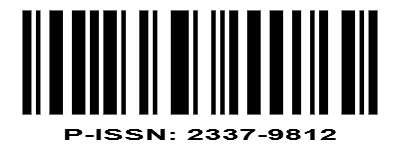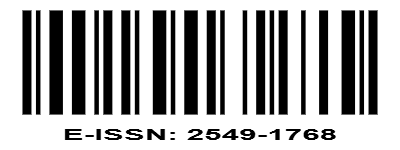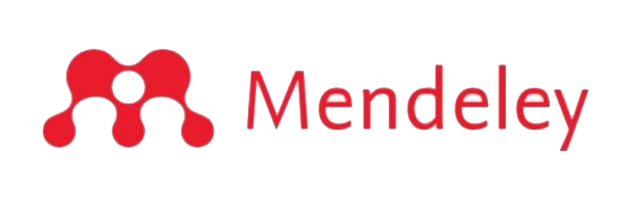ANALISIS PENDAPATAN NELAYAN TRADISIONAL DENGAN MENGGUNAKAN ALAT TANGKAP LIFT NETS (Ali) DI KECAMATAN ARONGAN LAMBALEK KABUPATEN ACEH BARAT
DOI:
https://doi.org/10.22373/biotik.v8i2.8193Keywords:
income, fishermen, lift nets fishing gear (Ali), income analysisAbstract
Capture fisheries is a source of livelihood for fishermen. Fishers in Arongan Lambalek are still classified as traditional fishermen and still use simple fishing gear in their operations. One of the fishing gear used is Lift Nets (Ali) fishing gear to catch shrimp. This study aims to determine the income of traditional fishermen using Lift Nets (Ali) fishing gear in Arongan Lambalek District, West Aceh Regency. This research was conducted from June to July 2020. The data collection method was purposive sampling method with 20 respondents. The analyzes used total cost, total beneficiary, profit and RCR. The results showed that, the amount of catch of fishermen using Lift Nets (Ali) fishing gear in Arongan Lambalek District was 2.872 kg / month with an average of 144 kg / month / fisherman, the total cost of 20 fishermen was Rp. 24.540,278 with an average total cost of Rp.1.227,013 months / fisherman, the amount of revenue from 20 fishermen is Rp.73.235,000 / month with an average income of Rp. 3.661,750 months / fisherman and income from 20 fishermen is Rp.48.694.722 / month and the average income of fishermen is Rp.2.434.736 / month and the average RCR of Rp.2.98 months / fisherman, which means RCR> 1, then traditional fishing business using Lift Nets (Ali) fishing gear is feasible.Downloads
References
Kusnadi. 2009. Keberdayaan Nelayan Dan Dinamika Ekonomi Pesisir. Pusat Penelitian Wilayah Pesisir Dan Pulau-Pulau Kecil. Lembaga Penelitian Universitas Jember. Jember: Universitas Jember. Jurnal Litbang Vol. XIII, No. 2 Desember 2017: 80-92.
Retnowati. 2011. Nelayan Indonesia Dalam Pusaran Kemiskinan Struktural (Persspektif Sosial, ekonomi Dan Hukum). Jurnal Litbang Vol. XIII, No. 2 Desember 2017: 80-92.
Alflan. 2014. Pengaruh Umpan Terhadap Hasil Tangkapan Alat Tangkap Anco (Lift Net) Di Perairan Rawa Bulung Kulon, Kabupaten Kudus. Fakultas Perikanan dan Ilmu Kelautan, Universitas Diponegoro. Journal of Fisheries Resources Utilization Management and Technology Volume 1, Nomor 1, Tahun 2012, Hlm 128-137.
Rupawan. 2015. Inventarisasi Jenis Alat Tangkap Daerah Aliran Sungai Barito, Kalimantan Tengah dan Kalimantan Selatan. Palembang
Dumairy. 2004. Analisi Faktor-Faktor yang Mempengaruhi Tingkat Pendapatan Pedagang Ikan Beberapa Pasar Tradisional Dikota Medan (Studi Kasus: Pasar Sambu, Glugur Dan Peringgan). Fakultas Ekonomi Universitas Hkbp Nommensen Medan
Juaningsi. 2016. Analisi Usaha Pengolahan Tradisional Ikan Kering di Desa Jangkar Kabupaten Situbondo. Samakia. Jurnal Ilmu Perikanan. Vol.7 No.1, Tahun 2016.
Shinta. 2011. Ilmu Usaha Tani. UB Press. Jakarta.
BPS Aceh Barat. 2013. Aceh Barat Dalam Angka. Penerbit Badan Pusat Statistik dan Bapeda Aceh Barat.
Pratama, D. S, Iwang Gumilar dan Ine Maulina. 2012. Analisis Pendapatan Nelayan Tradisional Pancing Ulur di Kecamatan Manggar, Kabupaten Belitung Timur. Jurnal Perikanan dan Kelautan, Vol. 3, No. 3, September 2012: 107-116.
Kusuma, A. P. 2019. Analisis Efisiensi Pendapatan Nelayan Tradisional Menggunakan Alat Tangkap Payang di Desa Masalima Kecamatan Masalembu Kabupaten Sumenep. Prosiding Seminar Nasional Ekonomi dan Teknologi. ISBN: 978-602-50605-8-8.
Downloads
Published
Issue
Section
License
Authors who publish with BIOTIK: Jurnal Ilmiah Biologi Teknologi dan Kependidikan agree to the following terms:
- Authors retain copyright and grant the journal right of first publication with the work simultaneously licensed under a Creative Commons Attribution License that allows others to share the work with an acknowledgement of the work's authorship and initial publication in this journal.
- Authors are able to enter into separate, additional contractual arrangements for the non-exclusive distribution of the journal's published version of the work (e.g., post it to an institutional repository or publish it in a book), with an acknowledgement of its initial publication in this journal.
- Authors are permitted and encouraged to post their work online (e.g., in institutional repositories or on their website) prior to and during the submission process, as it can lead to productive exchanges, as well as earlier and greater citation of published work.











